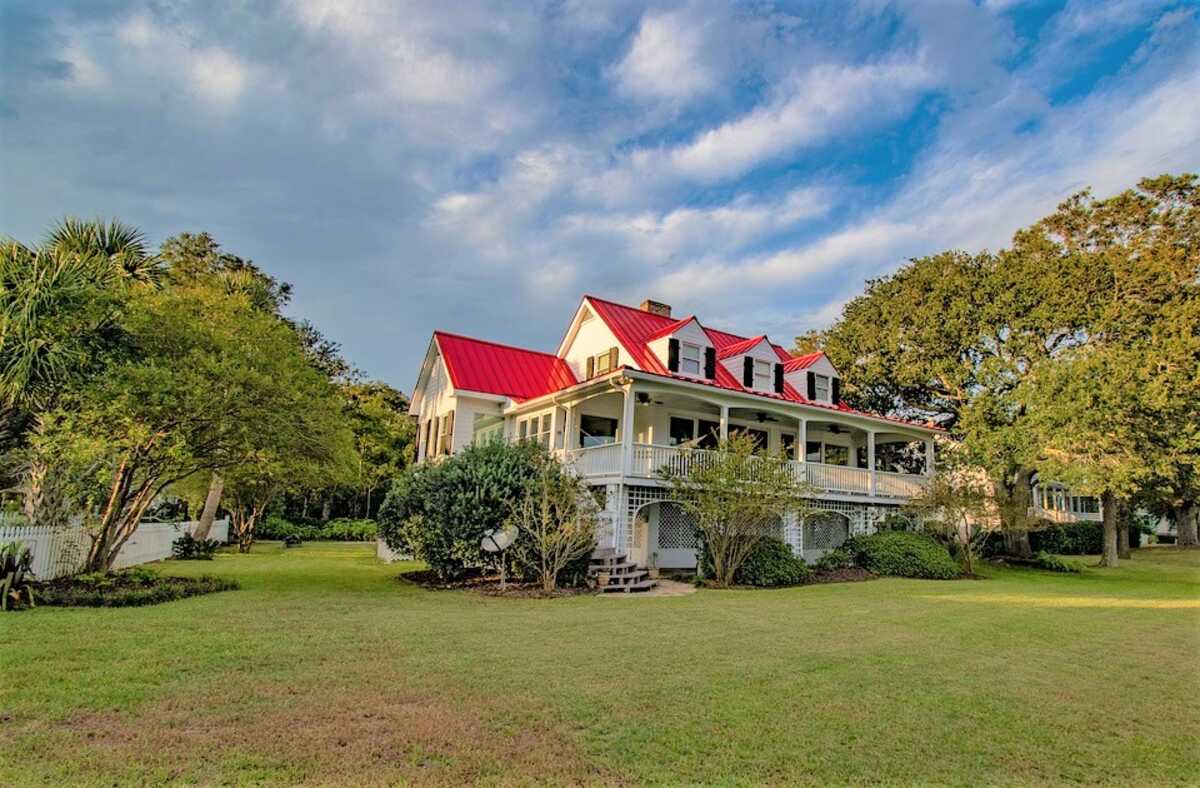
South Carolina has one of the best climates in the country for growing a wide range of plants and grasses. Lawns can grow lush and beautiful here, but due to our state’s diverse climate and soil, different grass types thrive in different areas. In this article, we’ll explore the best grass seeds for South Carolina, from the mountains to the coast!
In South Carolina, the following grass species can withstand the elements, ward off pests, and thrive:
For a quick overview, jump ahead to how to choose the best grass type for your South Carolina lawn.
Warm-Season Grasses
In South Carolina, we have a great climate for warm-season grasses to grow well due to the high summer temperatures and humidity. Warm-season grasses thrive in the summer heat and go dormant during the winter months. We’ll help you decide which of these grasses is best suited for your Palmetto State lawn.
1. St. Augustinegrass
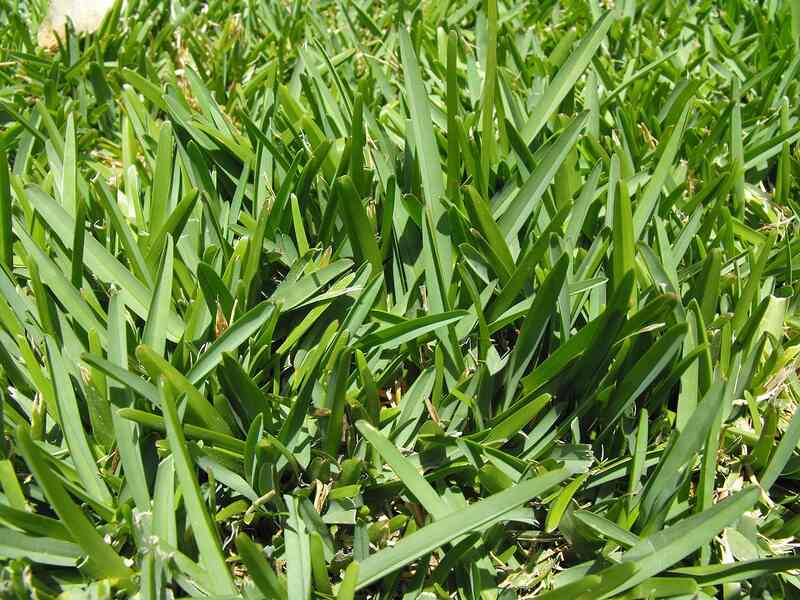
St. Augustinegrass is a popular choice for lawns in South Carolina, as it grows well in most areas except the mountains. The flat stems and broad leaves form a dense, blue-green lawn that can tolerate partial shade and thrive in hot, humid summers.
In addition to regular watering in the summer, St. Augustine requires two to four fertilizer applications a year. Knowing how to care for St. Augustinegrass will help your lawn keep that dark green color before winter dormancy. Thatch buildup is common, so plan to dethatch your St. Augustine lawn once the thatch level exceeds 3/4 inch.
Pro Tip: if planted in the piedmont region (west of Columbia), expect some winterkill in a St. Augustine lawn.
Classification: Warm-season grass
Spreads by: Stolons
Shade tolerance: Moderate. It is the most shade-tolerant warm-season grass.
Drought tolerance: Moderate.
Foot traffic tolerance: Low
Maintenance needs: Mow your lawn every 5 to 7 days. St. Augustine has moderate water needs.
Mowing height: Set the mowing height between 3.5 and 4 inches.
Potential for disease: Moderate to high
Soil pH: 6-7.5
Soil type: Tolerates many soil types; prefers moderately fertile, moist soils that are not waterlogged; won’t germinate in compacted soils
Other notes: To prevent pest infestations or fungus issues, it is recommended to mow the grass at the correct height and avoid overwatering. Aeration and dethatching also help lawns grow strong and minimize pests. Additionally, applying fungicides and insecticides can help control these issues.
Grass Plug Options:
– Seed Ranch St Augustine Seville Grass Plugs (2 Trays)
– Seed Ranch St Augustine Floratam Grass Plugs (2 Trays)
2. Centipedegrass
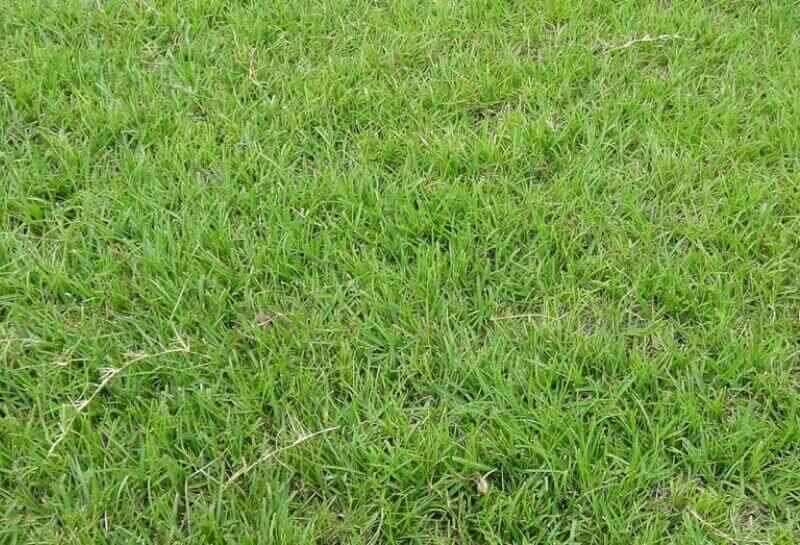
Photo credit: Michael Rivera / Wikimedia Commons / CC BY-SA 4.0
Centipedegrass is a slow-growing warm-season grass popular in South Carolina due to its low maintenance needs and tolerance for shade. Like St. Augustine, it thrives everywhere except the mountains. Centipedegrass doesn’t tolerate being overseeded for year-round color as competition can weaken its root system.
Centipedegrass requires some routine care to maintain its health and longevity as it is vulnerable to diseases and pests. Previously healthy grass can develop dead patches and yellow edges as part of a condition known as centipedegrass decline. It grows best in areas with little foot traffic since centipedegrass cannot withstand heavy use.
Classification: Warm-season grass
Spreads by: Stolons
Shade tolerance: Moderate
Drought tolerance: Moderate
Foot traffic tolerance: Low
Maintenance needs: Low. Fertilize it once or twice a year.
Mowing height: Set the mowing height between 1 and 2 inches.
Potential for disease: Good resistance to diseases and insects
Soil pH: 5-6
Soil type: Acidic, infertile soil types, at least moderately good drainage (very dense, clay soils produce poor results)
Other notes: Water deeply and infrequently to encourage deep root growth.
Grass Seed Options:
– Gulf Kist Coated Centipedegrass Seeds (1 lb.)
– Scotts EZ Seed Patch and Repair Centipedegrass (3.75 lbs.)
– TifBlair Centipedegrass (5-lb. bag)
3. Bermudagrass
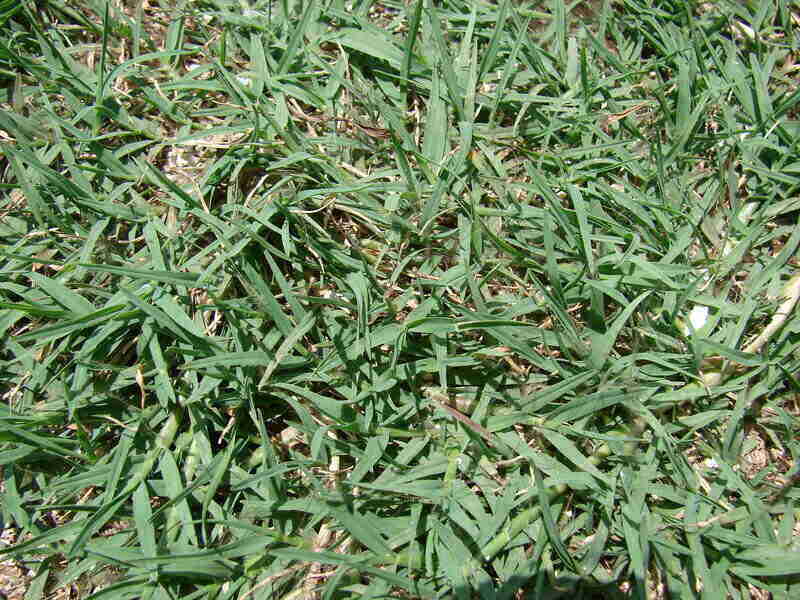
Bermudagrass is an excellent choice for South Carolina due to its strong roots, attractive green color, and ability to grow nearly everywhere in the state. In addition, its dense growth and ability to withstand (and recover from) heavy activity make it a popular choice for high-traffic lawns and golf courses alike.
Bermudagrass may also be an ideal choice if you’re concerned about drought (or just looking to save on your water bill) as it’s a highly drought-tolerant grass. It is also highly tolerant of salt, so it’s a popular choice along the coast. But be forewarned: This grass grows aggressively, so it may be difficult to keep Bermuda out of your flower beds.
Classification: Warm-season grass
Spreads by: Stolons and rhizomes
Shade tolerance: Low; thrives in full sun
Drought tolerance: High
Foot traffic tolerance: High
Maintenance needs: Mow your grass every 3 to 7 days. Fertilize your lawn every 4 to 10 weeks during the growing season, according to the soil test results and your fertilizer’s guidelines. It has low to moderate water requirements.
Mowing height: Mow common Bermudagrass down to 1.5 to 2.5 inches. For hybrid Bermudagrass cultivars (rarely used for home lawns), set the mowing deck between 0.5 and 1.5 inches
Potential for disease: Disease resistance is good, although diseases are common; low insect resistance
Soil pH: 6-6.5
Soil type: Tolerates most soil types
Other notes: Common Bermudagrass can tolerate poor soil conditions and requires less maintenance, but the lawn quality isn’t as good. Improved common cultivars offer a good “middle of the road” option between common Bermuda cultivars and high-maintenance hybrids.
Pro Tip: Bermudagrass produces a lot of pollen, so you should avoid letting it flower if you have grass allergies.
Grass Seed Options:
– Scotts Turf Builder Bermudagrass (10-lb. bag)
– Hancock Seed Co. Bermudagrass (50-lb. bag)
4. Zoysiagrass
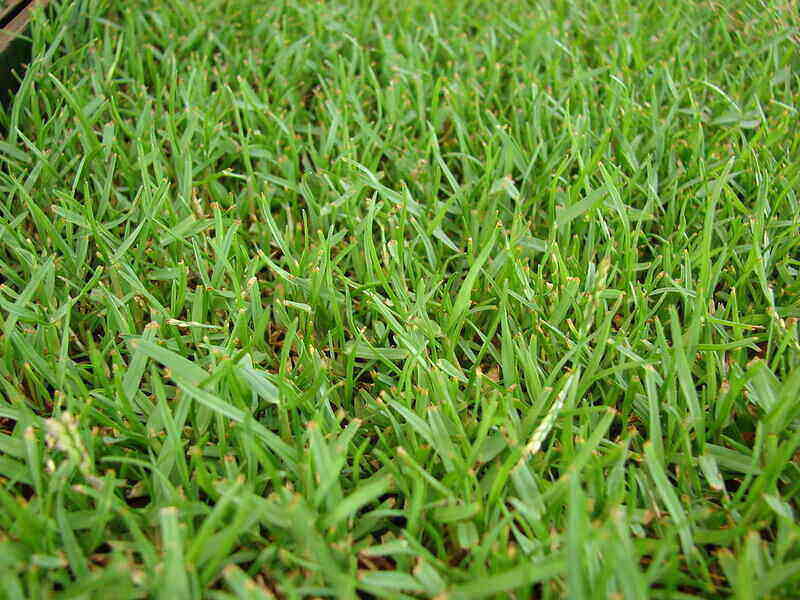
As a drought-tolerant and water-efficient grass, Zoysiagrass is a popular choice for homeowners who want to conserve water and reduce their environmental impact. Zoysia can grow across the state, from the mountains to the coastal plains, but the cold and salt tolerances vary by cultivar, so do your homework before you buy.
If you live in South Carolina and have limited time, Zoysiagrass’ yearly maintenance needs are low: Weeds are rarely a problem because of its dense growth, and its slow growth habit means less mowing and fertilizing than other grasses. Although Zoysia makes an excellent turf cover, its slow rate of growth makes it difficult to establish.
Classification: Warm-season grass
Spreads by: Stolons and rhizomes
Shade tolerance: Moderate
Drought tolerance: Moderate
Foot traffic tolerance: High, but recovers slowly from damage
Maintenance needs: Mow every 5 to 10 days. It requires a little nitrogen fertilizer but is prone to thatch buildup and requires dethatching once the thatch layer exceeds 1 inch.
Mowing height: Set mower height between 1 and 2 inches
Potential for disease: Good disease tolerance
Soil pH: 6-6.5
Soil type: Well-draining. Some cultivars are more tolerant of a wide range of soils than others.
Other notes: Zoysias are drought-tolerant, hardy grasses that range in texture from fine to coarse. They grow slowly but can self-repair.
Grass Plug and Seed Options:
– Zoysia Plugs (50 Large Grass Plugs)
– Zoysia Plugs (50 Full & Lush Grass Plugs)
– Zoysia Plugs (100 Plugs)
– Zenith Zoysia Grass Seeds (1/8 lb. of seeds)
Cool-Season Grass
5. Tall Fescue

Aaron J. Patton, Ph.D. / Turfgrass Extension Specialist at Purdue University
Tall fescue is a good choice for lawns in South Carolina’s upper piedmont and mountain regions (above 800 feet in elevation). Fescue grass is drought-resistant and can grow in various soil conditions, which is ideal for lawns with a lot of sun or average soil. Water during the summer to keep it green or let it go dormant and wait for it to revive in fall.
Tall fescue establishes easily from seed and germinates more quickly than Kentucky bluegrass. Tall fescue is a low-maintenance grass overall; however, it grows quickly and needs to be mowed often. As a cool-season grass, tall fescue is not suitable for coastal regions.
Pro Tip: Opt for newer, “turf-type” tall fescues in a home lawn. Older varieties like Kentucky-31 have coarser blades and aren’t recommended for residential use.
Classification: Cool-season grass
Spreads by: Produces short rhizomes but has a bunch-type growth habit
Shade tolerance: Moderate
Drought tolerance: Moderate to High
Foot traffic tolerance: Moderate
Maintenance needs: Frequent mowing. Does not produce significant thatch.
Mowing height: Set mowing height to 2 inches when the grass reaches 3 inches tall.
Potential for disease: Tolerant of most diseases when adequately maintained.
Soil pH: 5.5-6.5
Soil type: Adapted to various soil conditions but prefers fertile clay soils with good drainage.
Other notes: Compared with fine fescue, tall fescue has wider leaf blades and is more tolerant of South Carolina’s environmental conditions. Fescue is a bunch-type grass that needs overseeding in the fall to repair bare spots.
Grass Seed Options:
– Triple-Play Tall Fescue Grass Seed Blend (5000 sq ft)
– Eretz Kentucky 31 K31 Tall Fescue Grass Seed (choose your size)
– Pennington The Rebels Tall Fescue Grass Seed Mix (7 lb.)
How to Choose the Right Grass Type for Your South Carolina Lawn
Different turfgrass species perform better in different parts of South Carolina. Choose a lawn grass that works best for your area.
| Mountains | Piedmont | Sandhills | Coastal |
| Bermudagrass | Bermudagrass | Bermudagrass | Bermudagrass |
| Zoysiagrass | Zoysiagrass | Zoysiagrass | Zoysiagrass |
| x | St. Augustine | St. Augustine | St. Augustine |
| x | Centipede | Centipede | Centipede |
| Tall Fescue | Tall Fescue | x | x |
- Low maintenance: Centipedegrass is a low-maintenance, eco-friendly option for South Carolina lawns.
- Salty soil: Zoysiagrass and Bermuda are more tolerant of salt in soil and groundwater than other grasses.
- Sandy soil: Opt for tall fescue, centipede, Zoysia, St. Augustine, or Bermuda (any of the above, in other words).
- Shade tolerant: St. Augustinegrass, centipede, Zoysia, and tall fescue will all grow in moderately shady areas.
- High traffic: Bermudagrass is resistant to heavy traffic and pet damage.
When to Call a Pro
You should consider how much time you have to plant grass seed and maintain your yard. Even the most expensive turf will not raise the value of your home if it is not maintained and kept in good condition. Do you need help choosing the best grass type, trimming bushes, or planning your flower beds? Visit our lawn care page to contact an experienced lawn care professional in your city.
Lawnstarter has pros in Charleston, Columbia, North Charleston, Mount Pleasant, Rock Hill, Greenville, and in many other cities to handle all your lawn care needs in the Palmetto State.
Additional source:
Main Image Credit: Pixabay
LawnStarter participates in the Amazon Services LLC Associates Program, an affiliate advertising program. LawnStarter may earn revenue from products promoted in this article.